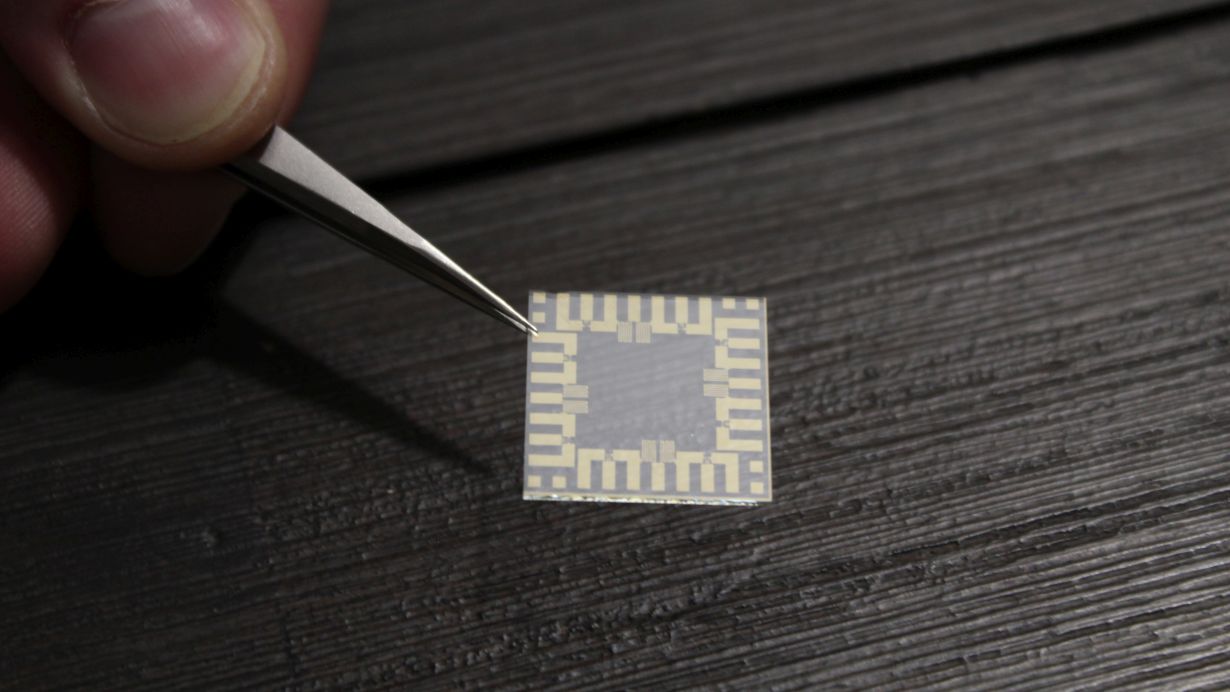Electronic sensors can benefit many industrial applications, such as automotive engineering. However, they have to be protected from attacks and falsification. The new joint project entitled “sensIC” aims to integrate printed electronics and silicon components directly into products in order to secure sensors. At the Karlsruhe Institute of Technology (KIT), researchers are developing a key component for this: printed security circuits with dedicated hardware-based functions, so-called Physical Unclonable Functions (PUFs). The Federal Ministry of Education and Research is funding “sensIC” with a total of 2.9 million euros. The industry partners are investing a further 1.35 million euros in this project.
Electronic sensors can reduce costs, improve reliability and enable new functions in many applications: in electrically powered vehicles, they monitor the temperature of batteries in order to optimize their service life and performance; in plants in the chemical and pharmaceutical industries, they track the condition of passive components so that any faults are detected immediately. Their use is particularly important for monitoring the transport of substances, such as drinking water or foodstuffs, oil or gas through pipelines. Here, a trustworthy supply and distribution chain must be guaranteed. Sensors can help detect tampering immediately. However, especially sensors that convert physical states into data streams are themselves exposed targets for attacks and falsification. How can sensors and sensor data be protected effectively? “Currently, information security in these applications is primarily based on software algorithms – but no software is perfect. Therefore, we have to ensure the security of hardware as well,” explains Professor Jasmin Aghassi-Hagmann, Head of the “Low Power Electronics with Advanced Materials” research group at the KIT Institute of Nanotechnology (INT). “Additive processes that create two- and three-dimensional components layer by layer are particularly well suited for this purpose. With the help of such components, we can retrofit security features without having to hand over the design to the original manufacturer.”
The new joint project entitled „Eindeutige Identifizierbarkeit für vertrauenswürdige Hybrid-Sensorelektronik mit Hilfe additiver Fertigung – senslC“ (unambiguous identifiability for trustworthy hybrid sensor electronics using additive manufacturing – senslC) combines additively manufactured, i.e. printed electronics with silicon components and securely integrates them directly into products. In a real-life application of the project, hybrid integrated sensor circuits are built into the hoses required for various automotive and industrial applications. The project, coordinated by Benecke-Kaliko, a subsidiary of Continental, combines materials science and cybersecurity. At INT, researchers led by Professor Jasmin Aghassi-Hagmann are developing and manufacturing a central component for this purpose: printed security circuits with so-called Physical Unclonable Functions (PUFs).
Digital Fingerprint Enables Identification and Encryption
PUFs are hardware-based functions that result from minute fluctuations in the production process. In electronics, for example, there are variations due to the coarse print resolution and the materials and inks used. A PUF evaluates these variations and uses them to generate an individual signal that serves as a kind of digital fingerprint and enables the component to be identified unambiguously, or information to be encrypted securely. In an article recently published in the Nature Communications journal, scientists from KIT and Offenburg University of Applied Sciences presented a hybrid PUF based on metal oxide thin-film components, combining printed electronics and silicon technology. This PUF is suitable for securing devices and protecting data in the Internet of Things where people communicate with machines and machines communicate with each other.
In the “sensIC” project, the PUFs, as electronic identification features, are complemented by optical identification features for industrial and automotive applications. In these optical features, developed by the Freiburg-based company Polysecure, embedded fluorescent particles form, as an inherent part of the process, random and therefore non-copyable patterns. These particle patterns are registered during the production process and thus allow the component to be identified unambiguously, providing additional tamper protection against hardware manipulations.
The Federal Ministry of Education and Research (BMBF) is funding the “sensIC” project, which started on May 1, 2021, for three years with 2.9 million euros. It is part of the framework program “Microelectronics from Germany – Innovation Drivers of Digitization”. The total project volume amounts to 4.25 million euros. It will be coordinated by Benecke-Kaliko, a subsidiary of Continental. In addition to the Institute of Nanotechnology of KIT, the companies Cyient and Polysecure, the Leibniz Institute for New Materials, the Offenburg University of Applied Sciences, ContiTech MGW and, as an associated partner, Elmos Semiconductor are also involved in the project.
Original Publication (Open Access)
Alexander Scholz, Lukas Zimmermann, Ulrich Gengenbach, Liane Koker, Zehua Chen, Horst Hahn, Axel Sikora, Mehdi B. Tahoori & Jasmin Aghassi-Hagmann: Hybrid low-voltage physical unclonable function based on inkjet-printed metal-oxide transistors. Nature Communications. Nature Research, 2020. DOI: 10.1038/s41467-020-19324-5
https://www.nature.com/articles/s41467-020-19324-5
Being “The Research University in the Helmholtz Association”, KIT creates and imparts knowledge for the society and the environment. It is the objective to make significant contributions to the global challenges in the fields of energy, mobility, and information. For this, about 10,000 employees cooperate in a broad range of disciplines in natural sciences, engineering sciences, economics, and the humanities and social sciences. KIT prepares its 22,800 students for responsible tasks in society, industry, and science by offering research-based study programs. Innovation efforts at KIT build a bridge between important scientific findings and their application for the benefit of society, economic prosperity, and the preservation of our natural basis of life. KIT is one of the German universities of excellence.

